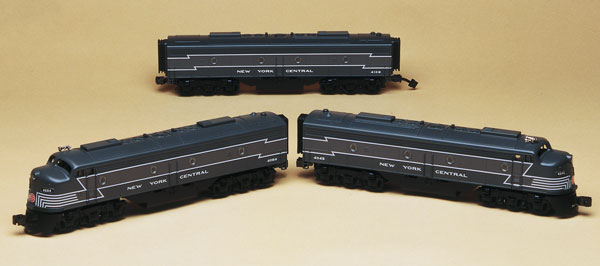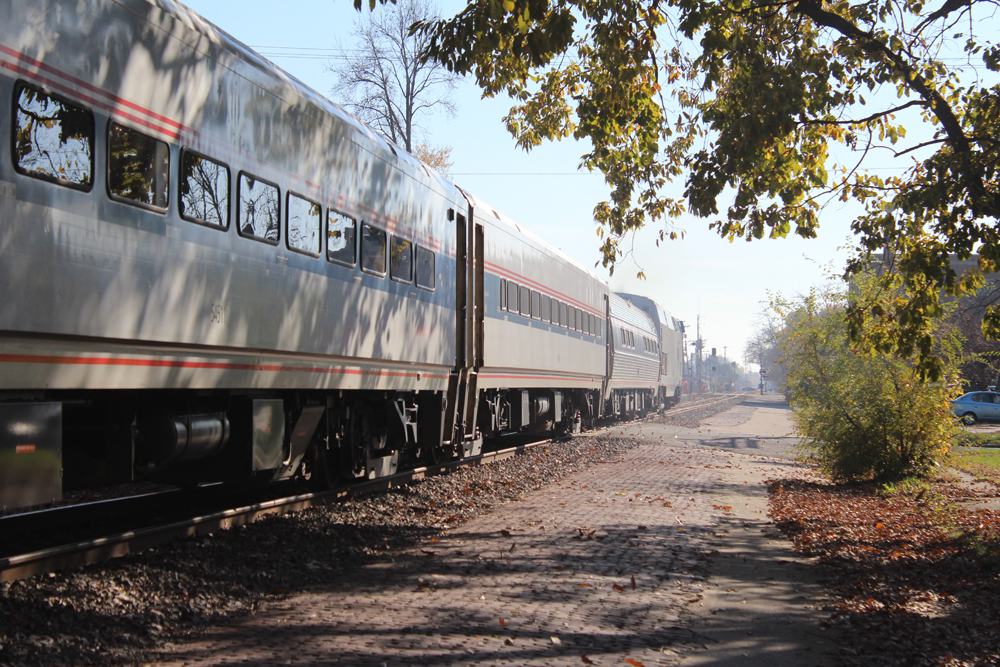Granted, the smaller size has given tight-radius operators a variety of diesels unprecedented in the hobby’s history, but when an F3 is smaller than some boxcars on the market, lets just say that the diminutive dimensions of RailKing diesels leave something to be desired.
Until now, that is.
Steam may be king of the RailKing line, but size-wise, MTH’s new E8 may give steam power a run for attention on O-31 layouts!
EMD’s E-series of diesel locomotives follows a classic design. Created for passenger service, the engines were longer and sleeker than the more numerous, but similarly styled F-units. More than 1,200 copies of all models (E1 through E9) were built and of those, 460 were 2,250-hp E8 A- and B-units. Anyone with an interest in railroading in the 1950s, ’60s, or ’70s will recall, that if you saw a pre-Amtrak passenger train, chances were good it had an E-unit on the point.
MTH offers the E-8 as an A-A duo with a separate sale B unit. The first run is in New York Central lightning stripe and Southern Pacific Daylight paint schemes.
Although reduced in size, the engine compares favorably to the prototype. The A-unit, with its oversized couplers, measures approximately 58 O scale feet versus the prototype’s 70 feet. But, when coupled into an A-B-A formation, the E8s measures more than 3 feet long.
The styling of the engine is true. Checking diagrams and prototype photos, this model is a good copy of the prototype, with most of the key reference points readily visible. Windows, hatches, and doors appear in the correct places and the level of detail is what you’d expect. All units have rubber diaphragms that look super when back-to-back.
The engine and dummy A unit have headlights, but lack directional lighting. As a result, both are illuminated no matter which direction the locomotives are running.
The B unit is something of a puzzle. The dummy unit has a tether mounted to one of the trucks. But with the horn-only A-units we tested, there are no matching receptacles. Accordingly, the A-B-A set was running around the layout with an unsightly cord dangling between the powered A- and dummy B-units.
After a call to a local dealer, we learned that all B units have the tether, even though it has no function with horn-only sets.
Performance was superb. The 4 lb. engine crawled around the layout without any hesitation or balking. We measured a low speed average of 15.7 scale mph and a high end average of 141.8 scale mph.
As is typical of engines equipped with two can motors and traction tires, the E8 didn’t hesitate when coupled to a freight train of 20 or more cars. The engine delivered an exceptional 2.4 lbs. of drawbar pull.
If you have reservations about adding RailKing diesels to your fleet due to their diminutive size, the larger dimensions of the E8 warrants a visit to your local dealer for a personal examination.














